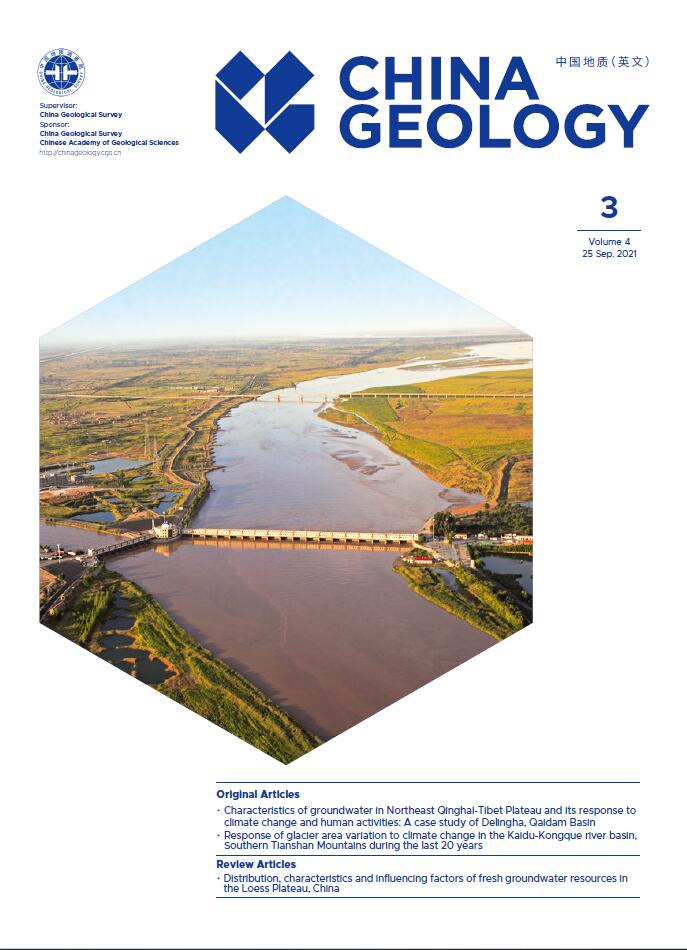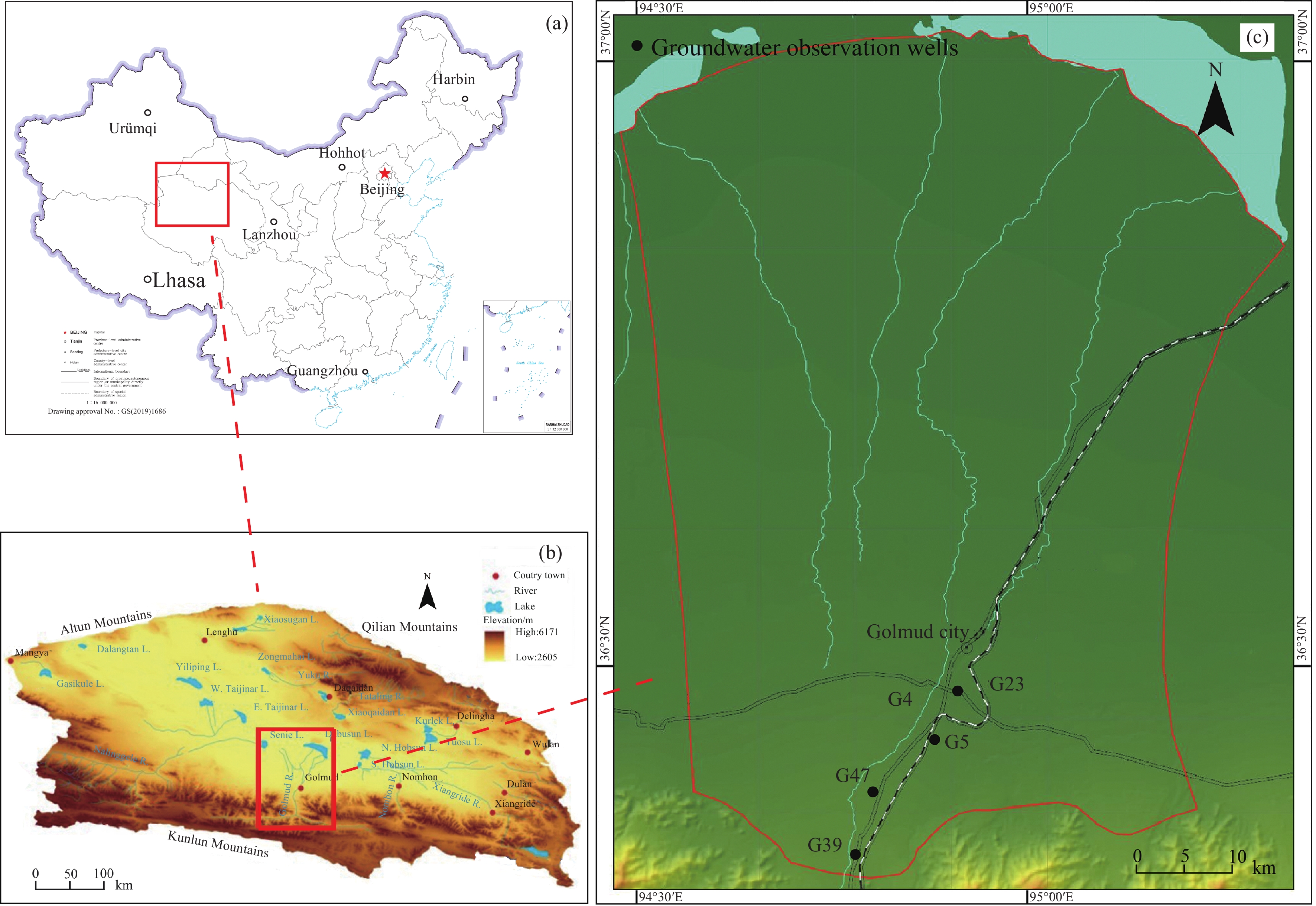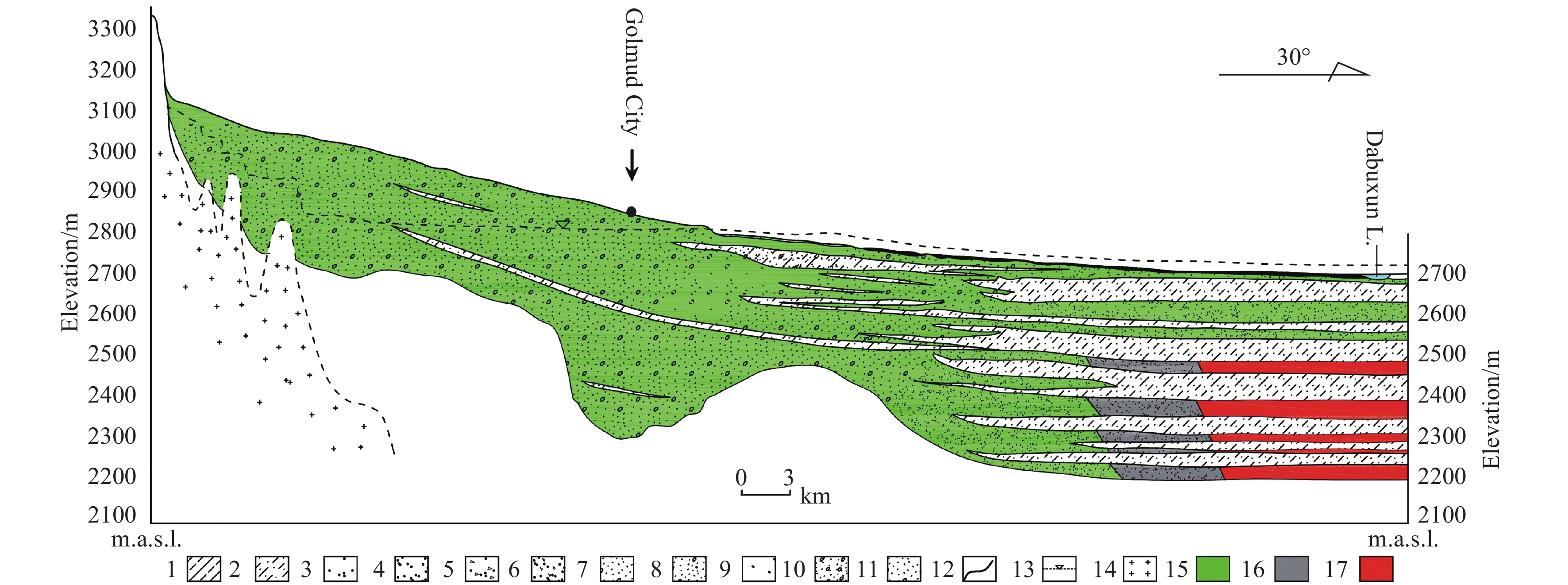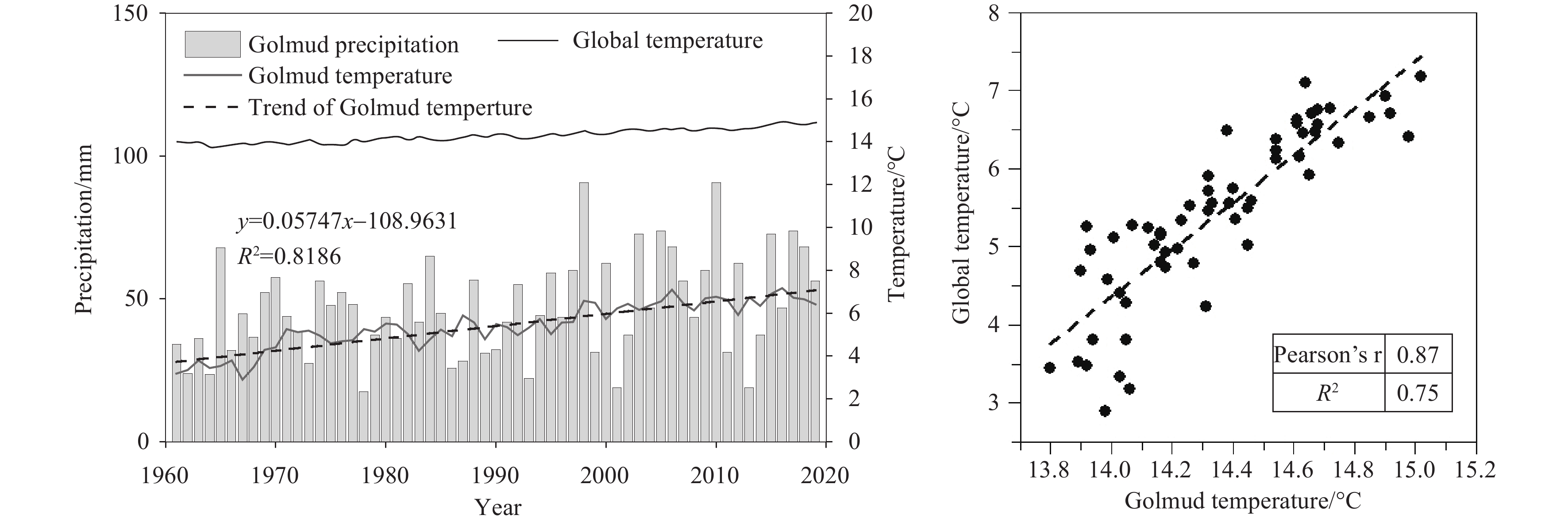| Citation: | Jia-wei Wang, Jin-ting Huang, Tuo Fang, Ge Song, Fang-qiang Sun, 2021. Relationship of underground water level and climate in Northwest China’s inland basins under the global climate change: Taking the Golmud River Catchment as an example, China Geology, 4, 402-409. doi: 10.31035/cg2021064 |
Relationship of underground water level and climate in Northwest China’s inland basins under the global climate change: Taking the Golmud River Catchment as an example
-
Abstract
To identify the response of groundwater level variation to global climate change in Northwest China’s inland basins, the Golmud River Catchment was chosen as a case in this paper. Approaches of time series analysis and correlation analysis were adopted to investigate the variation of groundwater level influenced by global climate change from 1977 to 2017. Results show that the temperature in the Golmud River Catchment rose 0.57°C every 10 years. It is highly positive correlated with global climate temperature, with a correlation coefficient, 0.87. The frequency and intensity of extreme precipitation were both increased. Generally, groundwater levels increased from 1977 to 2017 in all phreatic and confined aquifers and the fluctuation became more violent. Most importantly, extreme precipitation led to the fact that groundwater level rises sharply, which induced city waterlogging. However, no direct evidence shows that normal precipitation triggered groundwater level rise, and the correlation coefficients between precipitation data from Golmud meteorological station located in the Gobi Desert and groundwater level data of five observation wells are 0.13, 0.02, −0.11, 0.04, and −0.03, respectively. This phenomenon could be explained as that the main recharge source of groundwater is river leakage in the alluvial-pluvial Gobi plain because of the high total head of river water and goodness hydraulic conductivity of the vadose zone. Data analysis shows that glacier melting aggravated because of local temperature increased. As a result, runoff caused groundwater levels to ascend from 1977 to 2017. Correlation coefficients of two groundwater wells observation data and runoff of Golmud River are 0.80 and 0.68. The research results will contribute to handling the negative effects of climate change on groundwater for Northwestern China.
-

-
References
Bekele E, Knapp V. 2010. Watershed modeling to assessing impacts of potential climate change on water supply availability. Water Resour Manage, 24(13), 3299–3320. doi: 10.1007/s11269-010-9607-y. Chen Z, Grasby SE, Osadetz KG. 2003. Relation between climate variability and groundwater levels in the upper carbonate aquifer, southern Manitoba, Canada. Journal of Hydrology, 290(1), 43–62. doi: 10.1016/j.jhydrol.2003.11.029. Dang XY, Chang L, Lu N. 2019. The impact of climatic warm-wet situation of the Xizang Plateau on the water resources and environment in Qaidam Basin. Geology in China, 46(2), 359–368 (in Chinese with English abstract). doi: 10.12029/gc20190212. Ding WG, Wei YL, Niu HW. 2010. Impact of vegetation regeneration on soil nutrient variation in central arid region of Gansu province. Ecology and Environmental Sciences, 19(11), 2568–2573 (in Chinese with English abstract). doi: 10.16258/j.cnki.1674-5906.2010.11.023. Guevara-Ochoa C, Medina-Sierra A, Vives L. 2020. Spatio-temporal effect of climate change on water balance and interactions between groundwater and surface water in plains. Science of the Total Environment, 722, 137886. doi: 10.1016/j.scitotenv.2020.137886. Huang JT, Li ZZ, Wang WK, Song G, Wang JW. 2021. Characteristics of evaporation and its effect factors in the Golmud River catchment. Hydrogeology and Engineering Geology, 48(3), 31–37 (in Chinese with English abstract). doi: 10.16030/j.cnki.issn.1000-3665.202012023. Huang JT, Wang WK, Cui XD, Wang D, Liu WH, Liu XM, Wang SB. 2020. Environmental risk-based hydroeconomic evaluation for alluvial aquifer management in arid river basin. Science of the Total Environment, 711, 134655. doi: 10.1016/j.scitotenv.2019.134655. Jia YL, An FY, Zhang QX. 2016. Research progress of geomorphic evolution of Golmud River, Southeastern Qaidam Basin. Journal of Salt Lake Research, 24(4), 59–65 (in Chinese with English abstract). Jiang TL, Su XL, Guo SM. 2021. Spatiotemporal variation of vegetation water consumption and its response to meteorological drought in Northwest China. Journal of Hydraulic Engineering, 52(2), 229–240 (in Chinese with English abstract). doi: 10.13243/j.cnki.slxb.20200642. Jiao JJ, Zhang X, Liu Y. 2015. Increased Water Storage in the Qaidam Basin, the North Xizang Plateau from GRACE Gravity Data. Plos One, 10(10), e141442. Li BF, Chen YN, Chen ZS, Xiong HG, Lian LS. 2016. Why does precipitation in northwest China show a significant increasing trend from 1960 to 2010. Atmospheric Research, 167, 275–284. doi: 10.1016/j.atmosres.2015.08.017. Li M, Sun QH, Su ZZ. 2021. Research progress in dry/wet climate variation in Northwest China. Geographical Research, 40(4), 1180–1194 (in Chinese with English abstract). doi: 10.11821/dlyj020200328. Li Q. 2015. Mechanism of Groundwater Response to Climate Change in Weihe River Basin. Xi’An, Chang’an University, Ph.D thesis, 1–117 (in Chinese with English abstract). Lian YL, Zhang GH, Nie ZL, Ai T. 2011. Groundwater temperature variation characteristics and main influence factors identification in Zhangye Basin of northwest China. Arid Land Geography, 34(3), 391–399 (in Chinese with English abstract). doi: 10.13826/j.cnki.cn65-1103/x.2011.03.012. Ma PL, Yang JH, Lu GY, Zhu B, Liu WP. 2020. The transitional change of climate in the east of northwest China. Plateau Meteorology, 39(4), 840–850 (in Chinese with English abstract). doi: 10.7522/j.issn.1000‒0534.2019.00093. Ma YM, LI JP, Wang Y, Chen LW, Tang XL, Liu K. 2015. Temporal and spatial variation of shallow groundwater level and its response to precipitation in the mid‒west of Jilin Province. Journal of Arid Meteorology, 33(6), 994–999 (in Chinese with English abstract). doi: 10.11755/j.issn.1006‒7639(2015)‒06‒0994. Nie ZL, Zhang GH, Shen JM, Yan MJ, Wang JZ. 2012. Characteristics of groundwater function distribution and its indication for sustainable groundwater resource development in interior basins, northwestern China. Journal of Arid Land Resources and Environment, 26(1), 63–66 (in Chinese with English abstract). doi: 10.13448/j.cnki.jalre.2012.01.032. Peng DD, Zhou TJ. 2017. Why was the arid and semiarid Northwest China getting wetter in the recent decades? Journal of Geophysical Research, 122(17), 9060‒9075. doi: 10.1002/2016JD026424. Shi YF. 2001. Estimation of the water resources sffected by climatic warming and glacier shrinkage before 2050 in west China. Journal of Glaciology and Geocryology, 23(4), 333–341 (in Chinese with English abstract). Tan H, Rao W, Chen J, Su ZG, Sun XX, Liu XY. 2009. Chemical and isotopic approach to groundwater cycle in western Qaidam Basin, China. Chinese Geographical Science, 19(4), 357–364. doi: 10.1007/s11769-009-0357-9. Timothy R, Makoto T, Henk K, Jason J, Diana M, Kevin M, Holger T, Alice A. 2011. Beneath the surface of global change: Impacts of climate change on groundwater. Journal of Hydrology, 405, 532–560. doi: 10.1016/j.jhydrol.2011.05.002. Wang SB, Wang XS. 2019. Causes and environment geological effects of inter-annual groundwater level variations in Golmud. Geotechnical Investigation & Surveying, 47(6), 36–42 (in Chinese with English abstract). Xiao Y. 2018. Groundwater Circulation Patterns and Its Change Trend in Southern Qaidam Basin, northwest China. Beijing, China University of Geosciences (Beijing), Ph.D thesis, 3–5, 31–40 (in Chinese with English abstract). Zhang N. 2017. Research on Groundwater Environmental Evolution of Yishu Basin under the Impact of Climate Change and Human Activities. Jilin, Jilin University, Ph.D thesis, 2–8 (in Chinese with English abstract). Zheng XY. 2012. Mechanism of Groundwater Response to Climate Change in Guanzhong Basin. Xi’An, Chang’an University, Master thesis, 1–62 (in Chinese with English abstract). Zhou PP, Wang GC, Duan RQ. 2020. Impacts of long-term climate change on the groundwater flow dynamics in a regional groundwater system: Case modeling study in Alashan, China. Journal of Hydrology, 590, 125557. doi: 10.1016/J.J.HYDROL.2020.125557. -
Access History

-
Figure 1.
The location of the Golmud River Catchment in the Qaidam Basin of Northwest China.
-
Figure 2.
Aquifer character in Golmud River Catchment in the Qaidam Basin of Northwest China (after Huang JT et al., 2020). 1‒mild clay; 2‒sandy loam; 3‒silt; 4‒fine sand; 5‒medium sand; 6‒coarse sand; 7‒sand-gravel; 8‒sand-gravel with clay; 9‒gravel with cobble; 10‒gravel with clay; 11‒gravel; 12‒stratum boundary; 13‒groundwater level; 14‒granite; 15‒freshwater; 16‒saltwater; 17‒brine.
-
Figure 3.
Climate change in Golmud River catchment from 1961 to 2019. a‒climate change; b‒correlation between global temperature and Golmud temperature.
-
Figure 4.
Annual variation of groundwater level and precipitation in Golmud River Catchment.
-
Figure 5.
Annual variation of groundwater level and the river runoff in Golmud River Catchment.
-
Figure 6.
Annual variation of groundwater level in Golmud River Catchment.





 DownLoad:
DownLoad:




